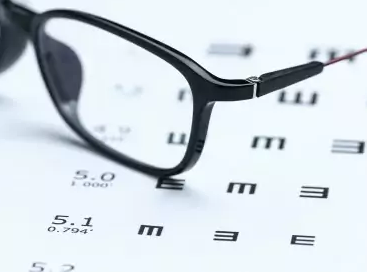Aniseikonia Symptoms, Causes, Test, Treatment
Aniseikonia is derived from the Greek words "an" (not), "is" (equal), and "eikn" (icon or image). The precise meaning is "unequal image." It is a term used to describe a situation in which one eye perceives an object's retinal image as being larger than the other, due to a fault in binocular vision.
To explain it another way, one eye will perceive an object as being larger than it actually is, while the other eye will perceive it as being smaller. Aniseikonia can appear in two distinct forms, according to certain medical professionals:
The most prevalent type of aniseikonia is called static aniseikonia; in this condition, when the eyes are looking in one direction, the pictures they detect in the peripheral field appear to be of a different size.
Dynamic Aniseikonia indicates that the person's eyes must rotate a variable amount in order to observe or gaze at a specific spot in the surrounding.
Symptoms
Aniseikonia may present with severe symptoms. Traditional-styled glasses can result in headaches, dizziness, eye strain, weariness, and non-adaption of the glasses depending on the severity of the aniseikonia and personal tolerance of the disease. Reading problems may also result from aniseikonia. Other symptoms could be headaches, astigmatism, photophobia, nausea with motility (diplopia), anxiety, dizziness and disorientation, general exhaustion, and distorted spatial perception.

Causes
Aniseikonia can develop spontaneously or as a result of the correction of a refractive defect. Most people can deal with up to 7% of aniseikonia between the eyes, which is about 3 diopters of anisometropia.
Optically-induced aniseikonia is a condition that can arise as a consequence of anisometropia that is created spontaneously, or as a consequence of refractive surgery, the implantation of a pseudophakic IOL, or aphakia.
Aniseikonia caused by compression, stretching, or injury to the retina can cause light reflected on the retina by a seen picture to look either larger (macropsia) or smaller (micropsia). This condition is referred to as retinal-induced aniseikonia. This condition is mostly caused by retinal disassociation, retinal tears, retinoschisis, macular edema, a hole in the macula, or epiretinal membranes.
Test
In order to identify Aniseikonia, the New Aniseikonia Test (NAT) use a direct comparison strategy. The patient will need to focus on pairs of neighboring half-moon targets with a calibrated size difference (one half is red, while the other is green). The degree of aniseikonia will then be determined by separating the images of the right and left eyes using a program called Aniseikonia InspectorTM.
Treatment
There is no widespread consensus regarding the treatment of Aniseikonia.
People can find many different ideas and opinions about the best way to treat this eye problem. The optimal course of action will vary depending on the circumstances associated with the patient, and occasionally medical professionals may need to combine several techniques.
Contact lenses can aid in the elimination of Dynamic Aniseikonia and the reduction of Static Aniseikonia. Optical magnification with the use of spectacles is the traditional treatment for aniseikonia. Visual acuity is unaffected by any of these two choices—the contact lenses or this alternative. Toric, doublet, and bonded bifocal lenses are further treatments for this ocular problem.
 Reviewed by Simon Albert
on
August 23, 2022
Rating:
Reviewed by Simon Albert
on
August 23, 2022
Rating:











